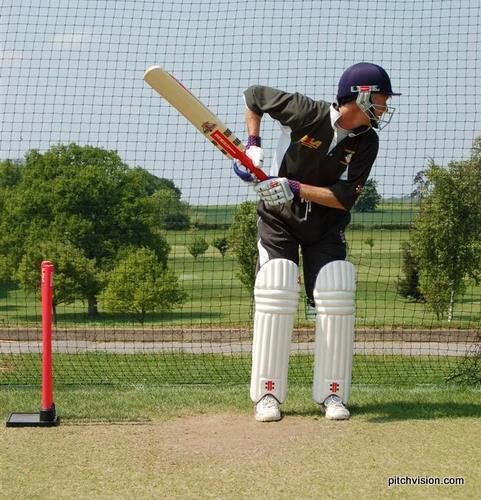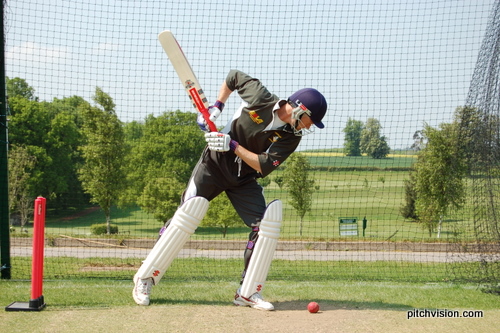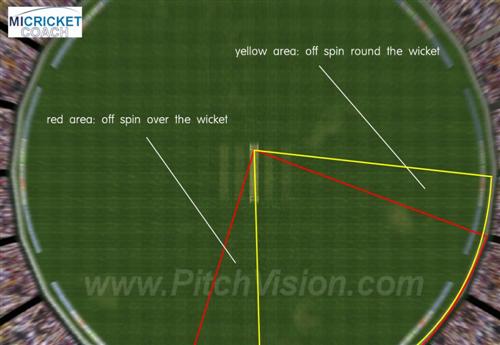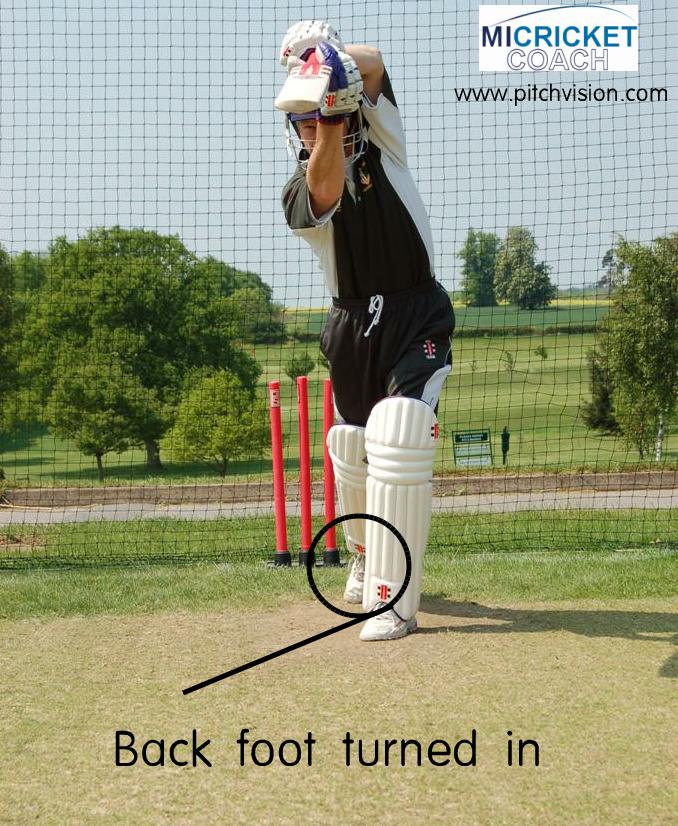|
Does good off spin bowling baffle you? It probably should. Even if you are confident against spinners, you can never really relax. Ask Ricky Ponting.
What you can do is learn to play better against off spin by making small changes to your technique and tactics.
Let's look at some of these now:
Keep your head
Your head is particularly important against spinners. Where your head goes, your body follows so it's vital that you keep it well forward. This starts in your stance, leaning forward as you raise your bat. It also means leading with your head when playing forward. The more you lean back the smaller the hitting zone (the area you can hit the ball safely).


Pick your scoring areas
Tactically, the first thing to consider is where the ball is safest to hit. For the off spinner to a right hander this is 'with the spin': fairly straight between mid off and midwicket. If the off spinner goes around the wicket the arc moves a little more leg side, cutting out mid off.
This diagram shows you the safest scoring areas:

Line up your hips
As you will be playing the ball straight and through the leg side a lot, you need to align your body to this area. This is against the normal coaching advice of staying sideways on.
Forget that.
In order to have a free swing with the full face of the bat your only option is to turn you back foot inwards when going forward. This will also turn your hips and your bat can come down towards the ball. As shown here:

Look to dominate
The good spinner's currency is to upset the batsman's rhythm. He does this through control of turn, flight and pace. If he or she is getting you to bat the way they want, they are winning. Your best way to prevent this is by counter-attacking.
Some players think this means blocking a series of good balls before trying to smash one over cow corner. This may work, but a more sensible approach is to get a feel for how the spinner is bowling before choosing a shot that is low risk but can get you runs.
For some players this might mean moving down the wicket, for others it means sweeping. It depends on your strengths and the line the off spinner is using. Whichever shot you choose, it's important to keep your technique tight and lead the shot with the head.
This method will make the spinner vary his approach and allow you to play more shots. For example, if he is bowling a good length and you are moving down the wicket he may drop the ball shot. This will allow you to go on the back foot, pulling or cutting.
Practice, practice and practice
The biggest problem batsmen face is getting up against quality spin in the nets. The way most net practice is set up doesn't allow for you to play like you do in the middle. Spinners bowl in turn with seamers and you usually have so little time you can't think about building an innings.
But practicing against spin is critical if you are to put these techniques and tactics into practice. You can't wait until a spinner comes on in a match. It's too late and too risky. So where possible get spinners to bowl in overs to you. Also, don't make the common mistake of trying to hit spinners in the nets from the first ball. Play yourself in, pretend it's a game and you only get one chance.
But best of all is middle practice. It's far more realistic and so you learn more.
Without proper practice all the other tips are pretty worthless. When in doubt, get in the nets.
image credit: jess-sxm
Scoring areas image supplied by PitchVision - Coach Edition. Available to purchase now for clubs, schools and cricket centres.

For more more tips on playing spin playing spin, check out Gary Palmer's interactive coaching course: The Complete Guide to Effectively Playing Spin Bowling. Gary is a coach with over 20 years experience teaching players to become first class cricketers. For the first time he has put his drills online, only at PitchVision Academy.
Discuss this article with other subscribers
|

.jpg)




.jpg)


